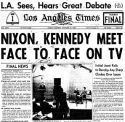 Over the last few days, the RSS feeds and various other sources have unearthed a number of articles that provide fascinating histories of various things. So I’ve decided to bring them all together into this historical prespective:
Over the last few days, the RSS feeds and various other sources have unearthed a number of articles that provide fascinating histories of various things. So I’ve decided to bring them all together into this historical prespective:
- Graf Zeppelin Stamps. As I work at home, behind me is a needlepoint I did ages ago of the $2.60 Graf Zeppelin stamp. I recently encountered a history of this series of three stamps, most of which were destroyed by the post office. At the time, the Zeppelin was the largest flying machine the world had ever seen. Its operating costs were proportionate, clocking at about $4 per mile (or $54 per mile in today’s money). Although passengers paid steep ticket prices, especially on early flights, the ship could only hold about 20 of them at a time, limiting that revenue stream. So the operating company turned to what supported most airline companies in those days: air mail. They commissioned special stamps from the countries on the tour route. Only letters with these stamps on them would be accepted onto the airship, which would then deliver them to their destinations. The arrangement was that 93 percent of the proceeds from each stamp was funneled back into German Zeppelin Airship Works. The US eventually agreed to make such stamps: 65c, $1.30, and $2.60, with the hope that collectors would buy most of them and they could keep the funds. But this was the height of the depression, and the few bought were used on letters.
- Three Clubs. If you go to the Hollywood Fringe Festival, one of the venues is the Three Clubs Bar — but not being a bar type, I’ve never gone in. Still, I have an actress acquaintance of mine who does a regular Harry Potter-themed burlesque show there, so it is on my radar. Yesterday, LAist published a fascinating history of the bar, from its early days, its 1950s vibe, its appearance in the movie Swingers, to its current revitalization as a theatre-venue thanks to the HFF. There’s even a great picture of the actress I know, Kim Dalton (who I still believe is another Megan Hilty waiting to be discovered).
- Les Miserables. Speaking of theatre, let’s pivot to the musical and the book Les Miserables, which is about a man who was imprisoned for stealing a loaf of bread. NPR just did a history on bread at that time, and it is really interesting. There was no sharper marker of economic status in 19th-century France than bread. The country was divided into rich people who ate soft white bread (larton savonné) and poor people who ate coarse black bread (larton brutal) made from rye, into which bakers mixed sawdust, tree bark and other additives. The loaf that Valjean stole was the standard loaf of the poor in nineteenth-century France, an oval loaf weighing four and a half pounds, with a thick black crust and heavy grey meal inside. Not the sort of thing you would want to eat nowadays.
- Universal City. Pivoting next to film, yesterday also brought a really interesting history of how Universal City got started. Yes, the tour was there from the very start, as early as 1913 with the first studio. After setting up shop, Laemmle came west to scout San Fernando Valley locations on which to construct a larger studio in early 1914, and quickly informed Southern California of his search. He bought a full page advertisement in the February 19, 1914 Los Angeles Times, proclaiming, “We want a ranch of 600 to 1200 acres on which to product moving pictures.” He estimated the company spent $1 million a year in business around the studio, and that other businesses servicing it would also greatly contribute to the economy. Universal offered employment to hundreds, and shopkeepers would make money off of these individuals, so he asked what inducements cities would offer to land their business, not unlike rich sports team owners looking for cities to pay for construction of fancy new sports arenas for their teams. And thus… Universal City.
- Appliances. When I was young, appliances — once called “white goods” because that was the color they came in — lasted forever. A refrigerator or washing machine would last 25 years. Nowadays, things don’t last as long. Recraigslist has an interesting essay on the subject, exploring the reasons why appliances don’t last as long as they used to.
- Diplomacy. A bit less of a history, but an exploration of the board game Diplomacy, which I used to play all the time. There’s a bit of history, but this is more an exploration of the game at the level of international competitions. I played this during high school — along with Machiavelli — and ran an occasional tournament at a local game convention in the 1980s. Today I can’t scare up a game — no one wants to play an 8 hours game when one could play 4-6 eurogames in that time.

